Discover the Wonders of the World’s Underwater Museums
The Museo Subacuático de Arte, Cancun, Mexico
The Largest Underwater Museum in the World
Diverse in life and figurines, this extensive museum offers exploration of wonders to snorkelers, scuba divers and those in glass-bottomed boats. From replica to abstract, swim amongst depictions of domestic scenes, a VW Beatle and angels of the sea. Ponder on the lives these characters could have lived while exploring the corals the cling to their skins. Many sculptures have cavities for marine life to inhabit, crustations and eels have chosen this gallery as their home.
Divided into two galleries, Salon Nizuc is just four metres deep and exclusive to snorkellers while Salon Machones sits at eight meters deep and is suitable for scuba divers and snorkellers.
The galleries span 430sq metres of previously barren seabed, now awash with colours from coral that have made their home amongst the pH-neutral casts. The project includes over 500 permanent structures and were inspired with the casts of over 90 real-life models, nearby villagers from Puerto Morelos, to create a community to defend the ocean.
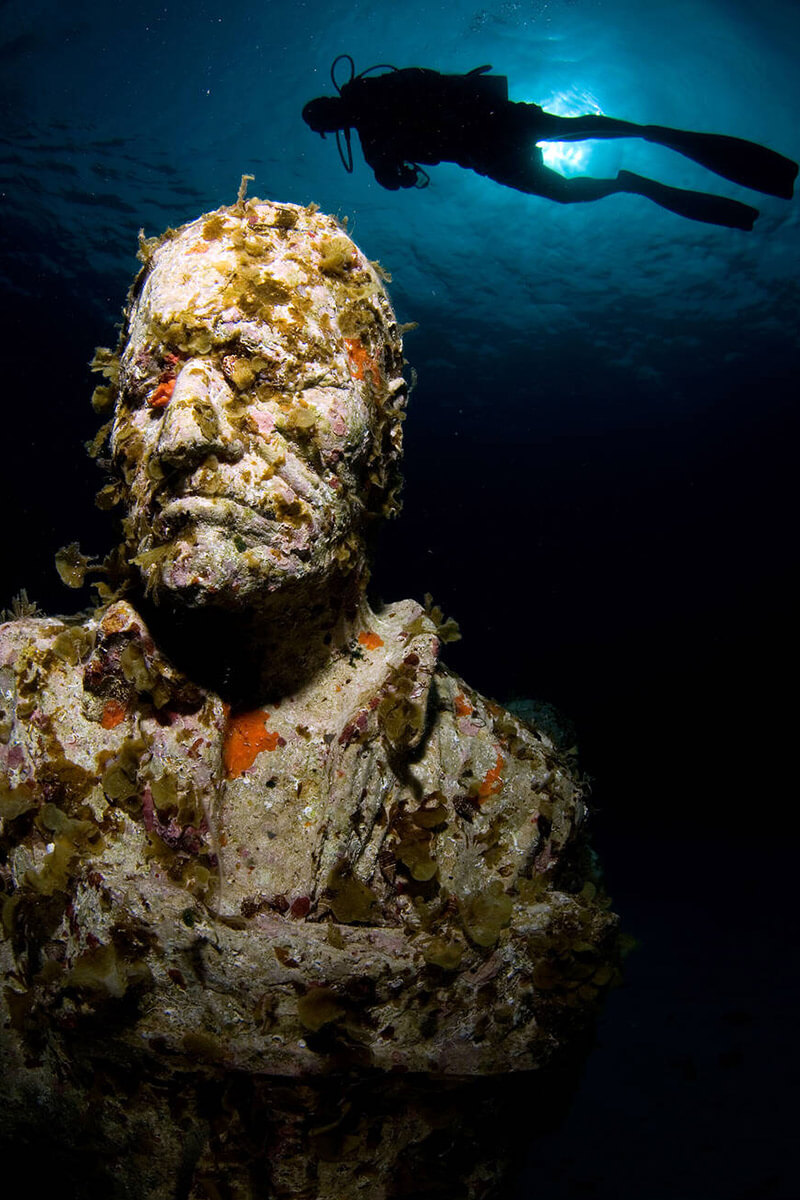
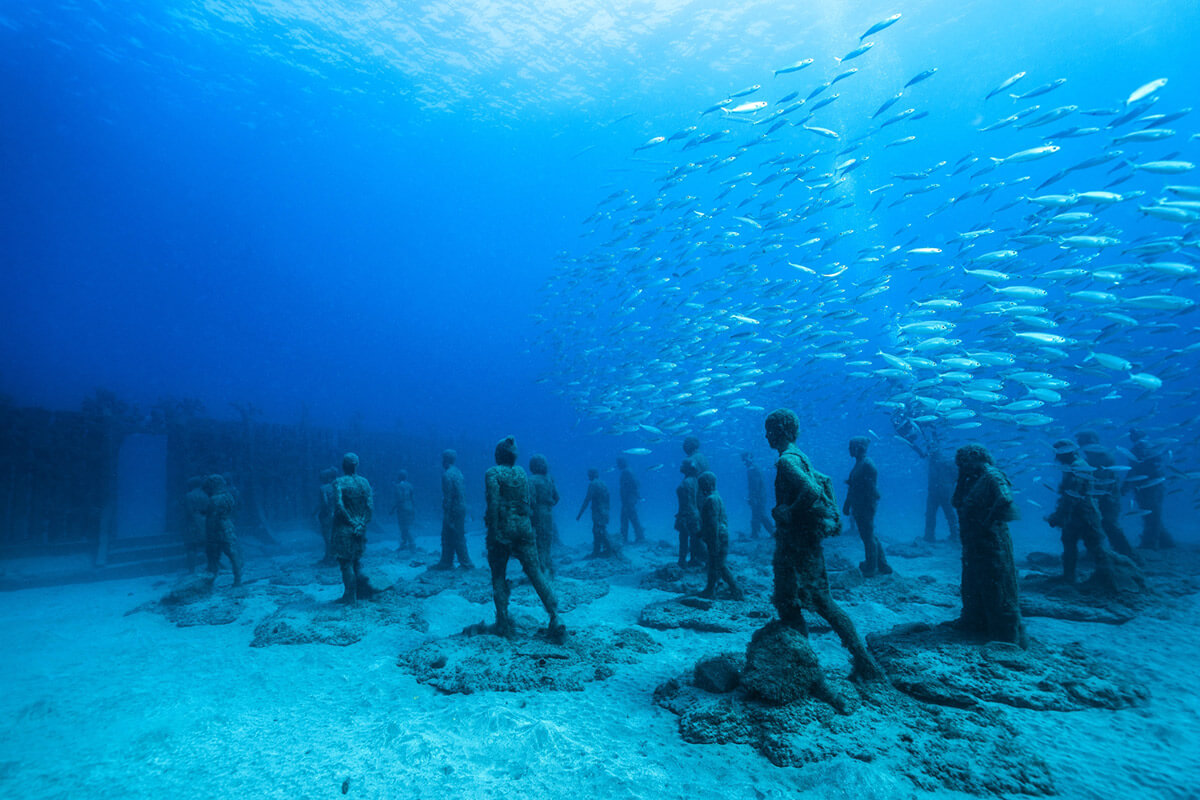
Museo Atlántico, Las Coloradas, Lanzarote
An underwater museum in Europe’s Atlantic Ocean
Abundant with over 300 life-size casts, this underwater museum is the first in Europe’s Atlantic Ocean. Structured to represent an underwater botanical garden, this paradise made with pH-neutral structures has become home to an array of marine life with the figures providing anchorage for coral and a streamline playground for fish. The garden is already teaming with angel sharks, barracudas, octopuses and butterfly rays frequenting the area.
These fascinating casts each hold a narrative; The Raft of Lampedusa is hauntingly thought provoking – perched upon the cast rib are 13 refugees, stranded with their hopes of a better life diminishing. Crossing the Rubicon sees a metaphorical representation of how society has lost connection, 35 wonderers stare at the ground or at phone screens while unknowingly walking towards an underwater wall – a point of no return. The Human Gyre swirls the seabed, 200 lifeless bodies arranged together expose the vulnerability of our forms and evoke an eerie feeling of mortality.
The metaphoric theme of these pieces call into question the destructive behaviour of human kind, asking its visitors to consider if the lives we are leading are really for the greater good. Hauntingly provocative, this is a site that should not be missed!
MUSAN, Ayia Napa
An Underwater Forest in Cyprus
With a vision for dynamic, cultural eco-tourism, this underwater wonderland was sculpted to bring the air and water worlds together. MUSAN pays homage to the history of deforestation while inspiring hope for a balanced future between humans and nature. This underwater museum stretches for 170 meters, scattered with traditional and contemporary sculptures that are figurative of Cyprus’ history. Drift through the underwater forest of sunken tree sculptures and find among them plants cradled by sleeping beauties, which symbolise the Marine Protected Zone and are changing the narrative to encourage us to nurture the planets ecosystems. The theme of connection between land and nature continues throughout the museum, interlacing the concepts of man-made and natural.
MUSAN can be explored by snorkelling above or by scuba diving. The crystal-clear waters offer an unforgettable experience of exploration. Be sure to book via the museum’s website before your visit to secure your place.
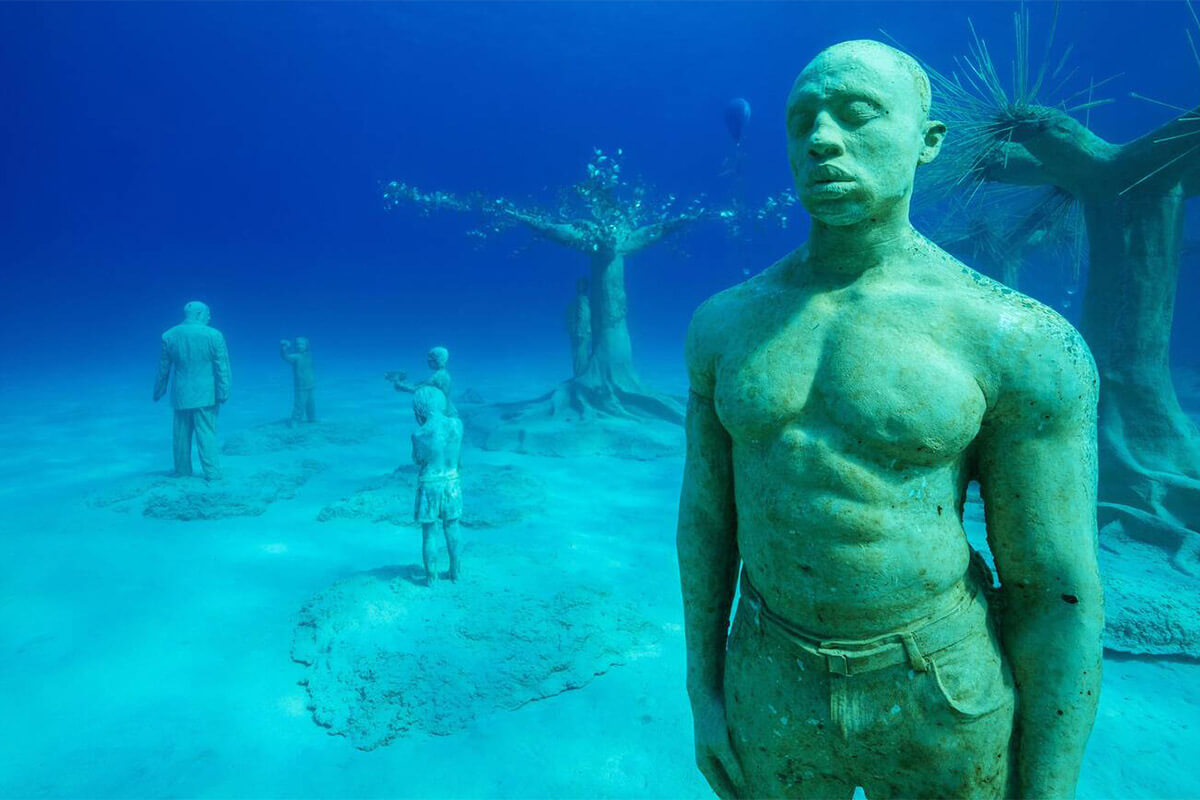
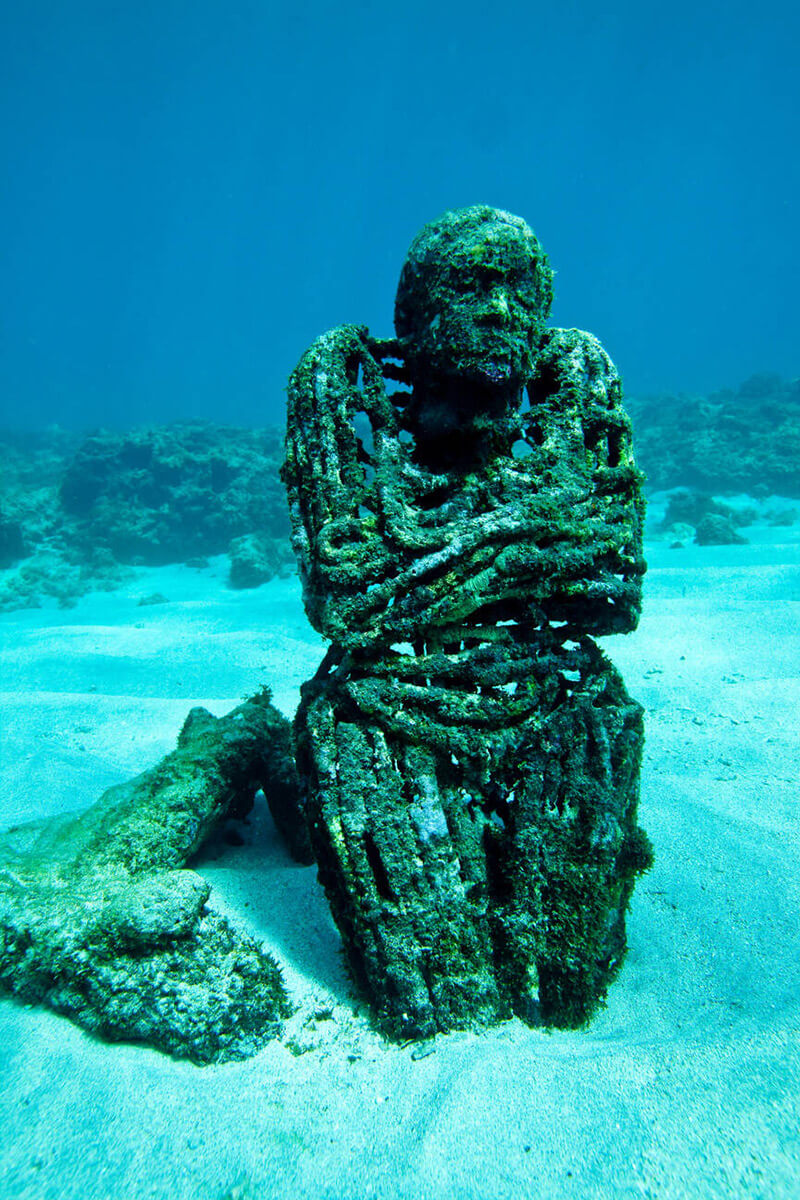
Grenada’s Molinere Underwater Sculpture Park, Molinere-Beauséjour Marine Reserve
An Underwater Museum in the Caribbean for Coral to Call Home
In the wake of Hurricane Ivan, this sculpture park was created by British ‘eco-artist’ Jason deCaires Taylor to provide artificial coral reefs for the corals to cling too in a bid to save what remained. Dropping 75 contemporary sculptures across a site of 800sq metres has created a gallery on the seabed fit for the restoration of life. Qualified divers or those with a guide can swim amongst the eerie statues – look out for The Lost Correspondent, a journalist at his typewriter, a mermaid and, arguably the most eye-catching, a ring of children holding hands, eyes closed, facing out into the depths of the sea.
While visiting the site you can expect to see an array of life swimming amongst the sculptures, from groupers to lobsters, cuttlefish, angelfish, neon tangs and, if you’re lucky, even lionfish. All are known to frequent the area thanks to the coral that has grown amongst these breath-taking figures.
The sculptures are placed on the sands between natural rock formations and gullies, at five-eight meters deep, those not wanting to scuba dive can enjoy glimpses of the figures from the surface by snorkelling or glass bottom boat.
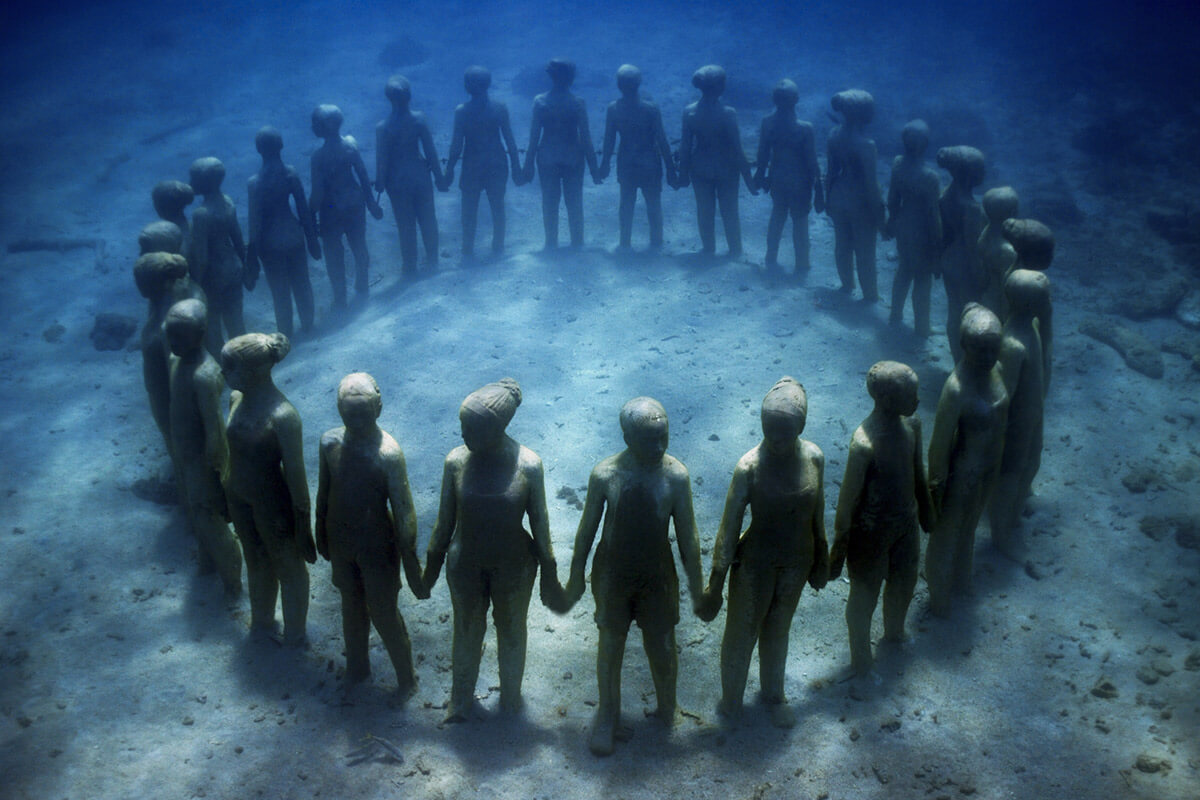
About the Artist
Jason deCaires Taylor MRSS graduated from the London Institute of Arts with a BA Honours in Sculpture. As a new-generation artist, Taylor’s creativity inspired the shift to intertwine the Land art movement with the underwater world.
Submerged, his site-specific statues explore contemporary themes of conservation and environmental activism. Each statue tells a story reflective of our world. Taylor has gained international recognition for his underwater museums and sculpture parks and has gone on to produce more than 1,100 underwater sculptures worldwide. Each statue is formed with pH-natural, environmentally sensitive materials that encourage natural growth for corals and provide homes for sea life.
In addition, Taylor is a scuba diver and award-winning photographer. With thanks to Jason deCaries Taylor for images.



 Go back
Go back